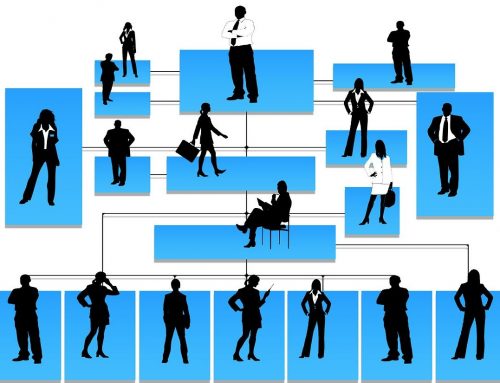In the sales world there is an increasingly fierce rivalry. Differentiating ourselves from our competitors by providing added value, such as customer service, is now a plus for us.
Traditional sales have a very simple component: the buyer looks for the product he wants to buy without the seller taking an active part in the sale.
Contenido
What is consultative selling?
Advisory selling is a selling style that puts customer needs at the heart of business interaction.
In this type of sale, it is the salesperson who guides the customer on which product is most suitable for his or her needs. Therefore, the salesperson must be perfectly trained in the products marketed by your company. You will need to know all the properties and faculties, what they can offer the customer, their advantages and how to make the most of them.
Phases of the consultative sale
Any consultative sale consists of clearly differentiated stages. Not all phases are the exclusive responsibility of the sales team. Good research development by the marketing department is essential in the early stages. And in the follow-up and closure stage, the performance of this department is also key.
Depending on the sector of our company, each stage will be developed with the help of different tools. A sale in person, in a shop, on a commercial visit to the customer’s home, or an online sale, by videoconference or even by e-mail, will not be the same thing. The type of products we market will also affect the way we develop each stage.
Training and prospecting
Conducting an analysis of the current market to get a picture of the situation is the first phase of the process.
This stage is often the responsibility of the marketing department which must analyze the market opportunities for your product. Defining the target audience to which our message is addressed will help the salesperson in the following stages of advice and personalization of the offer. We must be clear that the target audience does not have to coincide with the end user of the product or service.
Once the target is known, it is key to train the salesperson in the characteristics of the product so that the following stages can be developed as smoothly as possible.
This will lead us to have the first contacts with interested customers. We will employ pull and push strategies to attract customers to us or to bring us closer to them.
Presentation and active listening
Con el primer contacto directo con el cliente se produce la presentación del producto. Muchas veces este primer contacto marcará el resto del proceso.
La imagen que proyecte el comercial ha de demostrar seguridad en el producto o servicio. Presentarse brevemente, a él i a su producto y a partir de ahí escuchar.
Escuchar para entender al cliente, conocer su necesidad para poder asesorarle y ofrecerle lo que realmente precisa. Realizaremos preguntas que nos ayudarán a detectar lo que busca el cliente. El cliente debe sentirse escuchado y entendido. Podremos utilizar frases: “Si no he entendido mal tu necesidad principal es…” o “Según lo que me comentas estás buscando…” que ayudan a que exista un canal bidireccional en la comunicación. Repetir las frases que el mismo cliente ha utilizado para estar seguros y hacerle estar seguro al cliente que hemos entendido su mensaje.
Customized and customer-oriented argument
These actions take us to the next step. We know our products, we know the customer’s requirements: expose the matches.
This does not mean that if our product has other phenomenal characteristics we should not expose them. They will be an added value, but the main reason that will make the customer choose us over the competition is that we adapt better to their needs.
This is the phase where the salesperson must demonstrate that he has actively collected all the information. The more personalized the offer, the easier it will be for the consumer to see it as the most appropriate one.
It is likely that at this stage we will have to deal with some objections that the client may have. Resolving your doubts or questions without lying will be the best option to close the sale and build customer loyalty.
Follow-up
Another big difference from traditional sales is the realization of a follow-up. Whether we have closed the sale or not the follow-up phase is essential to gain knowledge for future actions.
Gathering all the information on a platform like uSell CRM will be important for future actions. In the case of closing the sale will help us in future closings, recurring purchases of the same customer, factors that have helped the decision, etc.. If the sale is not yet closed, we can generate sales opportunities in our CRM to track and possibly close in the future.
The role of a CRM in consultative selling
During the entire sales process, a CRM such as uSell CRM can be useful for displaying, collecting and storing information.
In the first phase a CRM will be useful as we will be able to search our database if a customer fits the target profile and perform some action on it. In addition to entering all the information about our product and always have the information and characteristics at hand to consult them.
In the presentation and active listening stage we will use our CRM to record all the information we obtain in the meetings with the client. Any information we obtain, however insignificant it may seem, can help us close the sale.

In the next step uSell CRM will help us to show the product features that suit our customer’s needs. We will be able to give you a quotation with your name, send you the offer in PDF format and add the advantages and characteristics of our product to that contact.
In the last phase of the process is where the role of our solution takes on a fundamental role. Whether the sale is closed, pending or lost, we have obtained relevant information and must ensure that all departments of the company benefit from the work done.
To follow up after the previous stages will allow us to cross-sell or offer other value-added products that we believe may fit the customer.






Leave A Comment